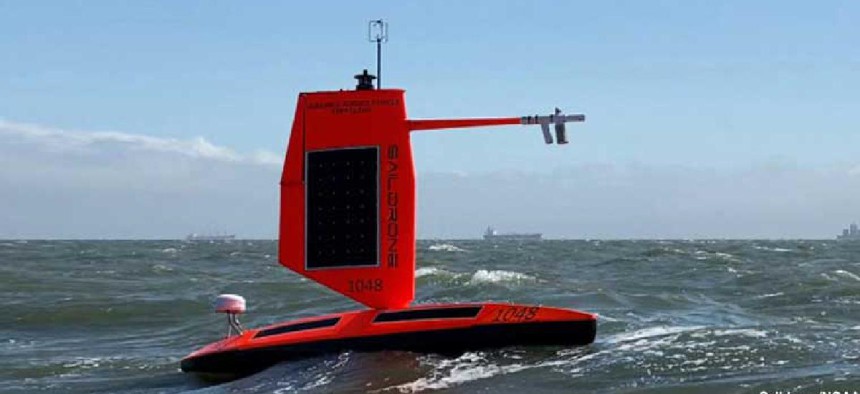Saildrone helps NOAA capture hurricane data


Connecting state and local government leaders
The National Oceanic and Atmospheric Administration sent the Saildrone Explorer SD 1045 into Sam’s path to collect data to help scientists better understand the nature of hurricanes.
A sailing drone has been capturing data and video from inside Hurricane Sam.
The National Oceanic and Atmospheric Administration sent the Saildrone Explorer SD 1045 into Sam’s path to collect data to help scientists better understand the nature of hurricanes.
Battling 50-foot waves and 120 mph winds inside the category 4 storm, the SD 1045 is collecting real-time observations for hurricane prediction models, which are expected to yield new insights into how large and destructive tropical cyclones grow and intensify and how coastal communities can better prepare for severe storms, NOAA officials said.
The wind-powered Saildrones feature meteorological and oceanographic sensors running on solar power that collect real-time data in ocean environments and transmit it via satellite. Data from their acoustic and camera system is processed with a proprietary onboard machine learning algorithm to deliver high-resolution data in real time to a secure web portal and raw data post-mission that can be accessed through an application programming interface or through the AWS Data Exchange.
“Using data collected by saildrones, we expect to improve forecast models that predict rapid intensification of hurricanes,” said Greg Foltz, a NOAA scientist. “Rapid intensification, when hurricane winds strengthen in a matter of hours, is a serious threat to coastal communities.”
Saildrones are constantly supervised by a human pilot via satellite as they navigate autonomously from prescribed waypoint to waypoint, accounting for wind and currents, the company said.
SD 1045 is one of a fleet of five unmanned vehicles that have been operating in the Atlantic Ocean during hurricane season. Equipped with “hurricane wings” that enable them to withstand winds over 70 mph and waves over 10 feet, they provide data directly to NOAA’s Pacific Marine Environmental Laboratory (PMEL) and Atlantic Oceanographic and Meteorological Laboratory, Saildrone’s partners in this mission.
The data on air temperature, relative humidity, barometric pressure, wind speed and direction, water temperature and salinity, sea surface temperature and wave height and duration will also valuable to the National Weather Service, which will use it to improve forecasting. The National Environmental Satellite, Data and Information Service will work to align data findings from other observing platforms, such as gliders, Saildrone said in June when the five-drone mission was announced.
The data will also be sent to the World Meteorological Organization’s Global Telecommunication System and disseminated to some 20 major forecast centers worldwide, including NOAA.
“Sending a robotic vehicle into the eye of a hurricane, that’s never been done before,” said Christian Meinig, director of engineering at NOAA/PMEL. “It’s an incredibly complex engineering challenge that could have a significant positive impact on our ability to predict extreme weather, for the benefit of communities facing these events.”





